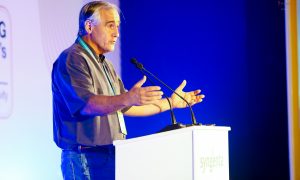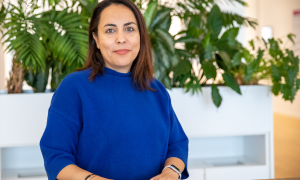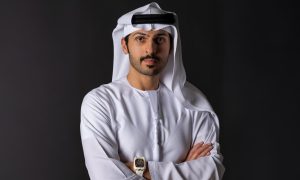She’s all about the people – and the planet, and is working hard to make sure Siemens stay true to its promise of becoming carbon neutral by 2030.
Judith juggles two priorities at Siemens: people and the planet. She’s the global tech powerhouse’s chief people and sustainability officer (CPSO), not to mention a member of the Managing Board (as of 2020). As you can imagine, a lot rests on her shoulders. Given the recent COP 26 in Glasgow, Milestone is delving into her efforts to make Siemens carbon neutral.
“Today, technology is focused on sustainability but it’s important to talk about what we mean exactly by sustainability,” Judith says. “Siemens is approaching the issue along the three dimensions of ESG: environment, social, and governance. We have such a long heritage, we’re nearly 180 years old, and we’ve been doing a lot through innovation and tech to influence how people and societies live going forward.”
We have further expanded our successful cooperation with Mercedes-Benz in Berlin in recent months
Judith explains that Siemens is long-term orientated – focusing on sustainability from a planetary and environmental perspective is written into the company’s strategy, portfolio, and DNA. Incorporating energy generated by renewable sources into industrial processes reduces both CO2 emissions and operating costs: “We’re also not a heavy industry. We’re not steel, we’re not cement, and we think that predominantly, we have to offer technological solutions developed through our innovation to help our customers transform. Our microgrid systems are helping many customers around the world to reduce their carbon emissions and achieve greater energy efficiency.”
Judith points to Siemens’ microgrid systems in the Azores Archipelago, which are reducing CO2 emissions by more than 3,500 tonnes each year. Siemens recently announced its new framework for sustainability, which revolves around the DEGREE concept. It stands for Decarbonisation, Ethics, Governance, Resource efficiency, Equity, and Employability.
“Again, this is very important for us in terms of how we establish a culture, where treatment of people is equitable,” she says. “And that goes to diversity targets, that also goes to equity as in, how do we allow all people to participate in Siemens through share plans? Those are the things that we subsume under equity.
The last E is very close to my heart – it stands for employability because, in a world that is changing so fast and where digitalisation also disrupts how we work and the type of work that we do, we think that the biggest gift and the biggest obligation that we have as an employer and a big company is to equip people to be resilient – to embrace change, to look positively and confidently to the world, but also to be relevant in terms of their professional skills and really make sure that we up- and reskill in a way that allows people to remain relevant to the employment market. Whether that’s within Siemens or beyond shouldn’t really matter.
Today, technology is focused on sustainability but it’s important to talk about what we mean exactly by sustainability
With more than $17 billion in revenue, Siemens’s 2021 results are an improvement on last year. Judith believes the pandemic gave firms the chance to self-analyse and work out how to better contribute to building a more sustainable world.
Progress is slow – CO2 emissions only fell by 7% in 2020, despite the COVID all but grinding industry to a halt. To comply with the 2015 Paris agreement, carbon emissions need to be slashed by 7.6% each year until 2030, a topic of hot debate during November’s COP 26, but Judith is optimistic: “The goals don’t seem so far away, thanks to technological innovation. Companies can provide solutions.”
“We’ve been reporting sustainability KPIs for quite some time. We have a big sustainability report that we publish every year, but here we really wanted to say, ‘Let’s put out target systems. Let’s not just report numbers, but let’s really put out some target systems.’” Judith explains. “In terms of resource efficiency, it is about designing our portfolio in a different way, designing our products in a different way, and using our digital technology through what we call the green digital twin as well to make sure that our portfolio is following a robust design approach. And of course, that will help our customers as well. Now, there are targets, like how do we use secondary material under resource efficiency as well?”
Siemens’ objectives in terms of sustainability are not limited solely to the company’s own operations; it also provides solutions for others. One example, explains Judith, is its Siemens’ partnership with Mercedes-Benz – in March this year, they announced they will be working together on the sustainable digitalisation and automation of the automobile industry with the support of the state of Berlin.
Judith says: “We have further expanded our successful cooperation with Mercedes-Benz in Berlin in recent months. We’re working with them on their Brownfield site
in Berlin to make the site and the production completely emission-free. They want to make that a blueprint for 30 of their factories around the world. We’re helping them with digitalisation, with automation, sustainability, engineering. And we’re also actually helping them with upskilling and reskilling their people. It’s our technology and our innovation that will help the customer become emission-free and make sure that they take their people with them. Together, we are proving that state-of-the-art technologies can also make existing production facilities fit for the future. We are thus taking a major step towards sustainable and even more competitive automotive production. The future of mobility begins in the production hall. And technology from Siemens enables this transformation towards electromobility. This makes us proud.”
Download the full PDF article here.













